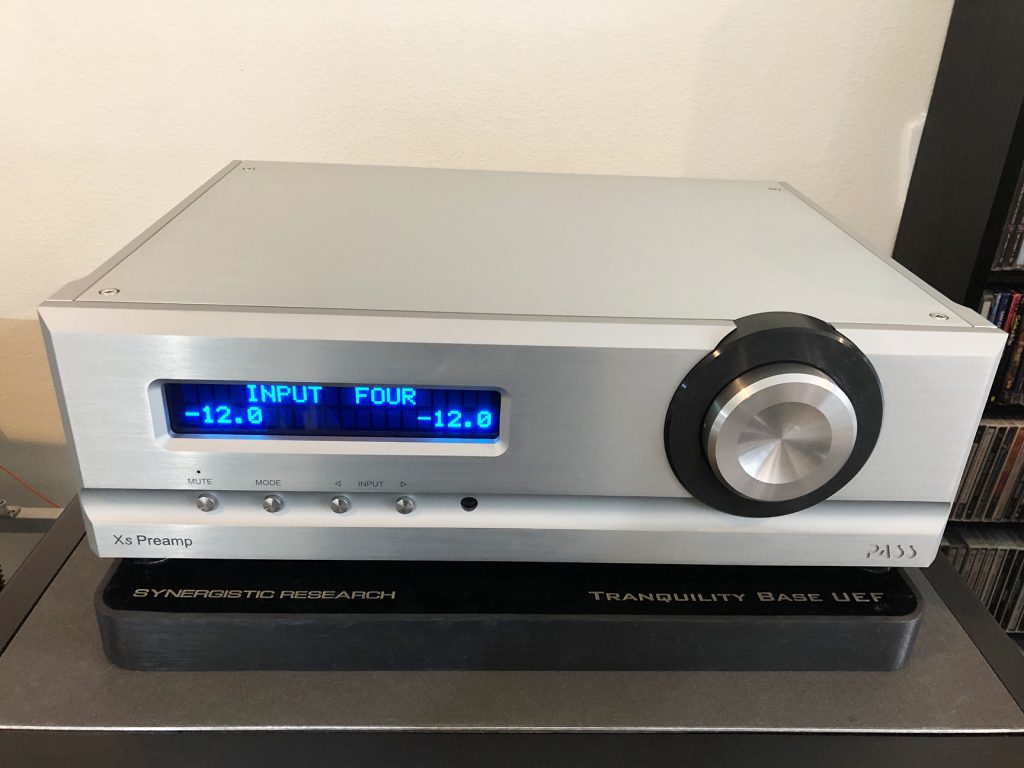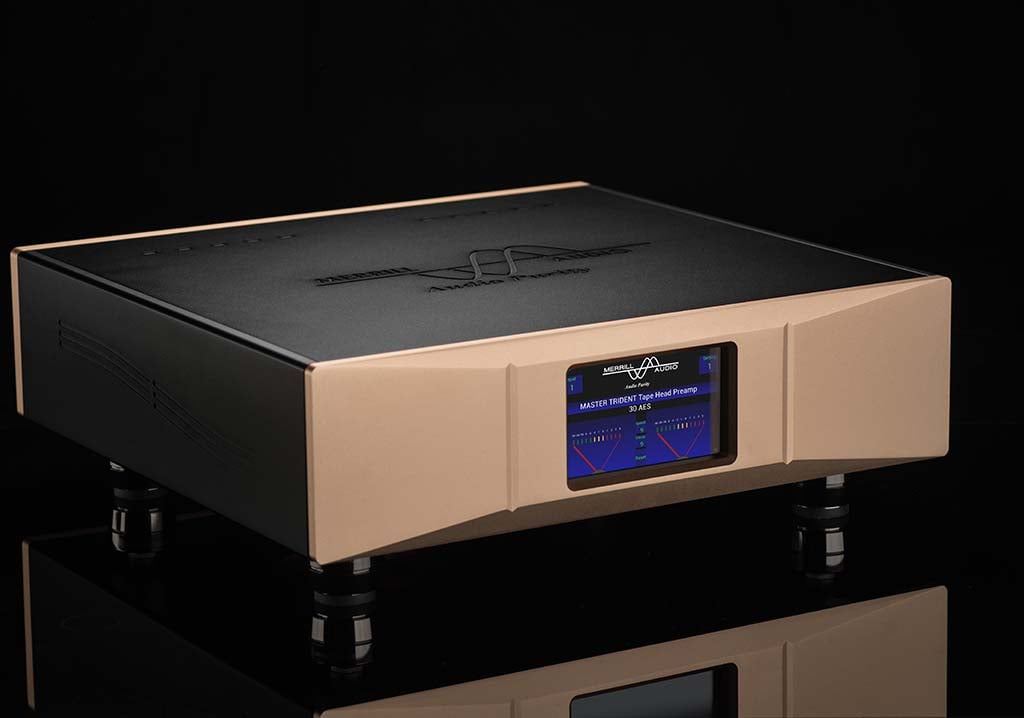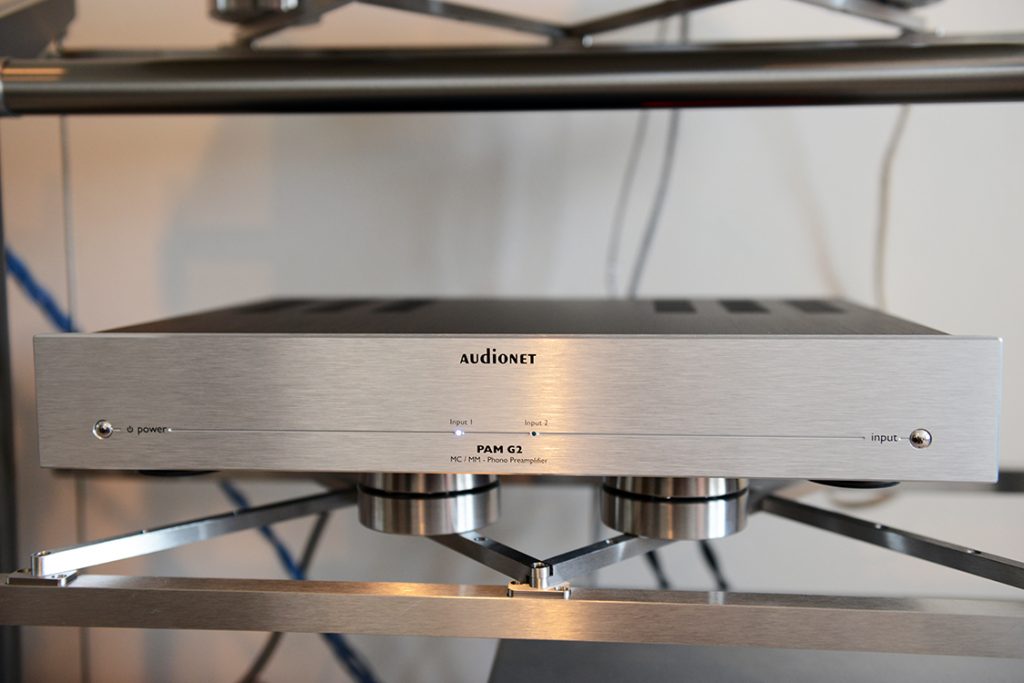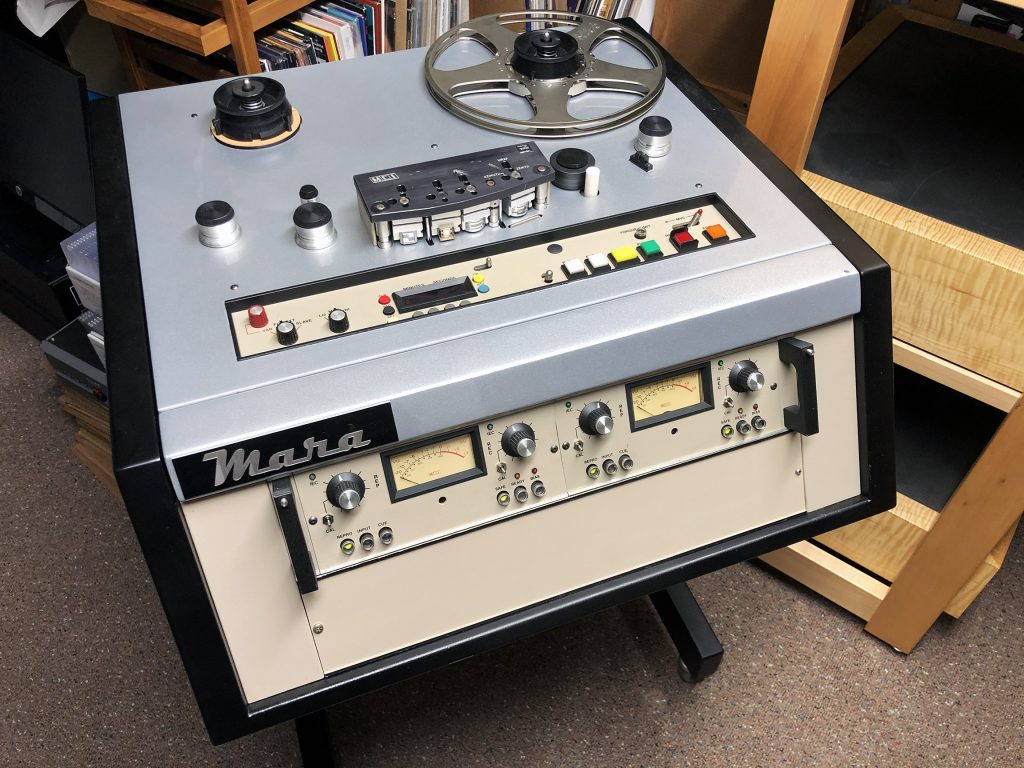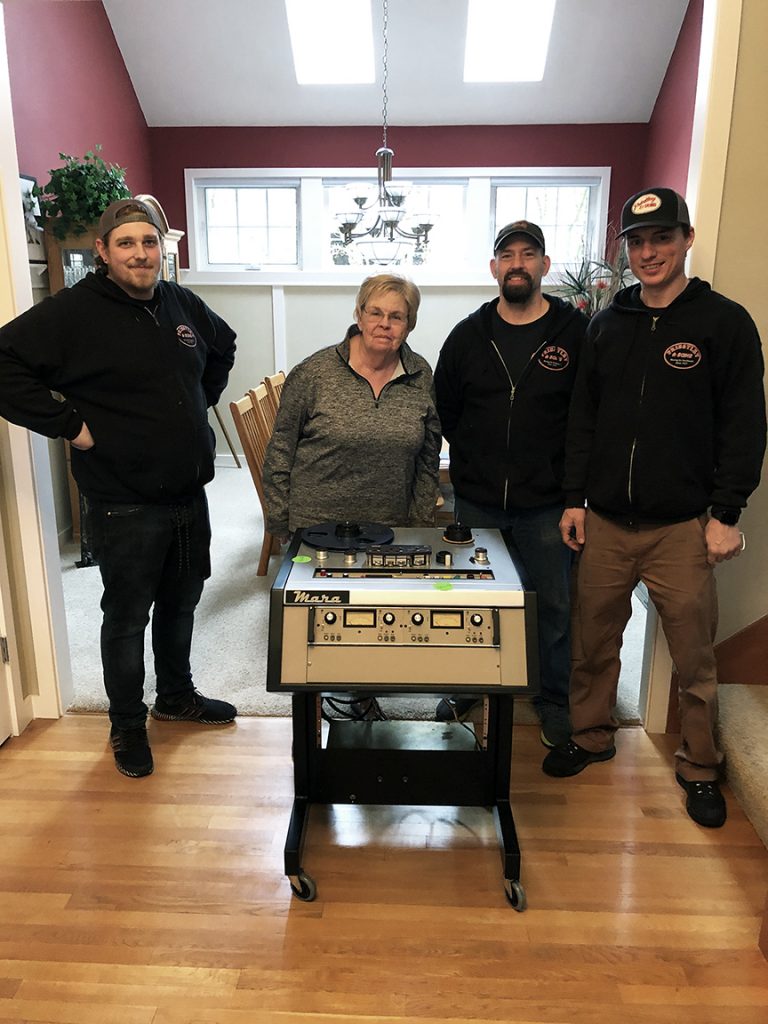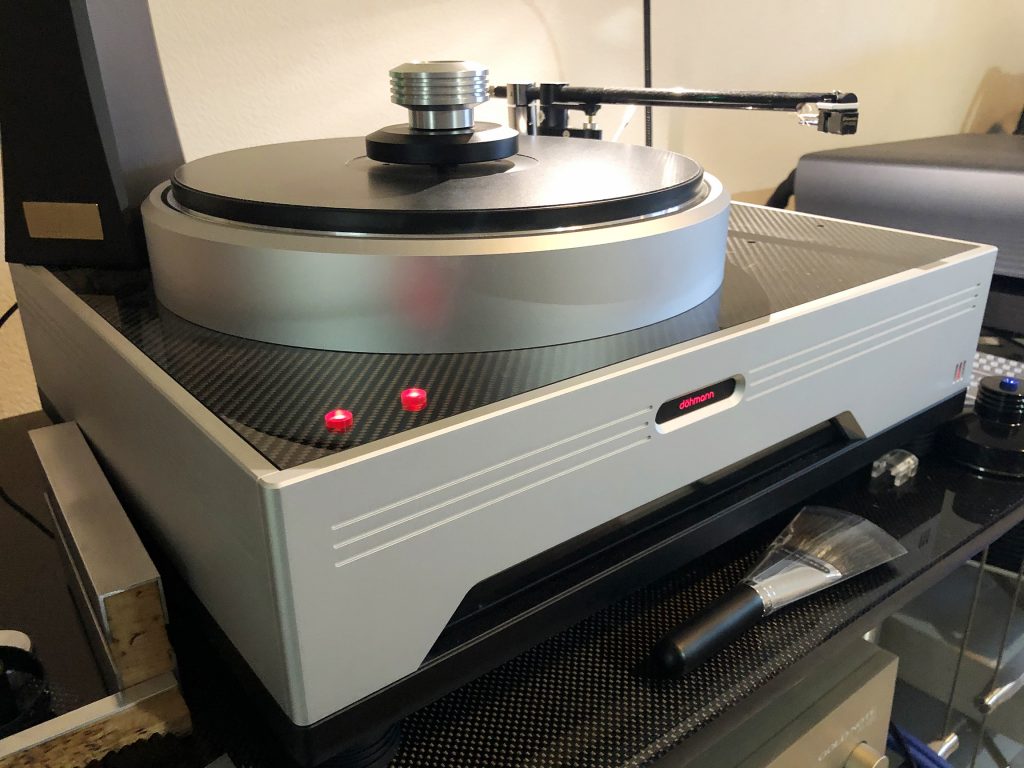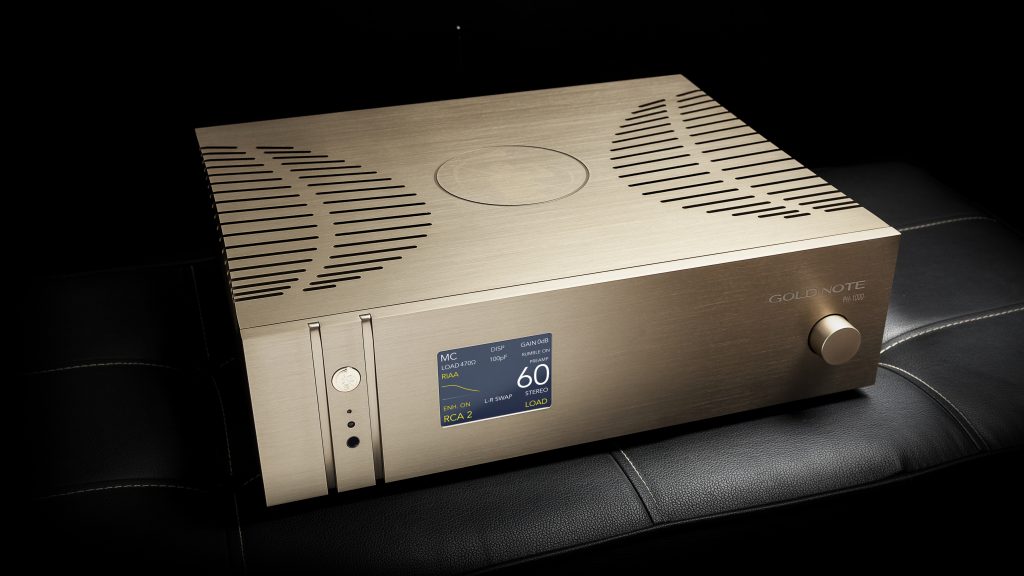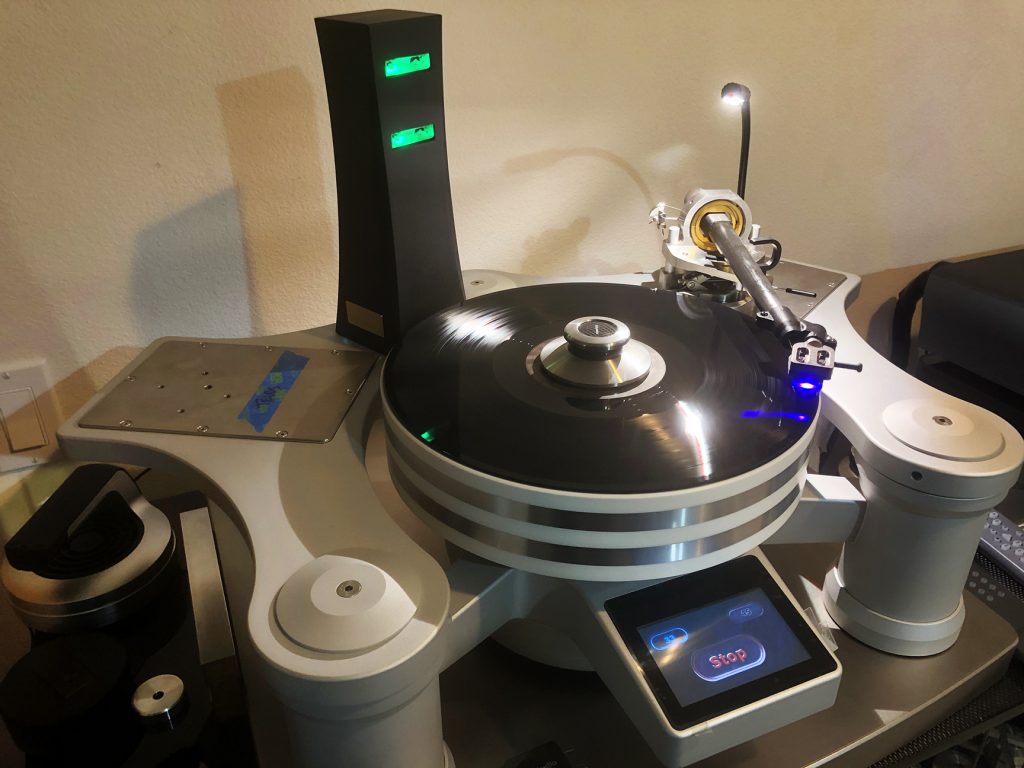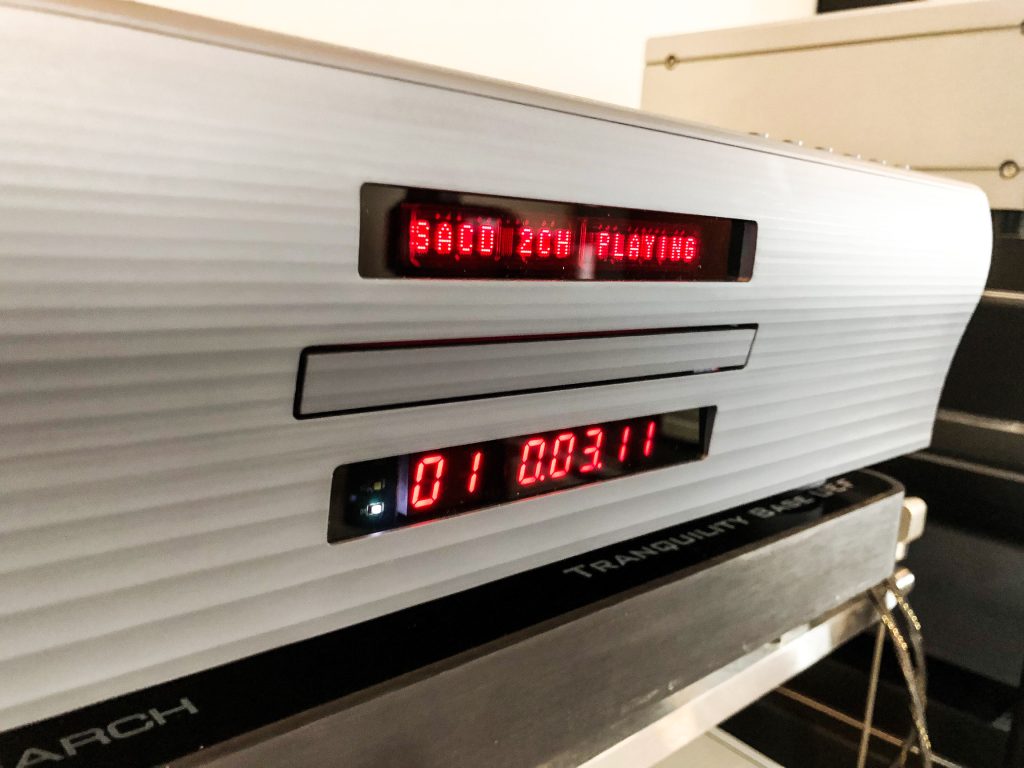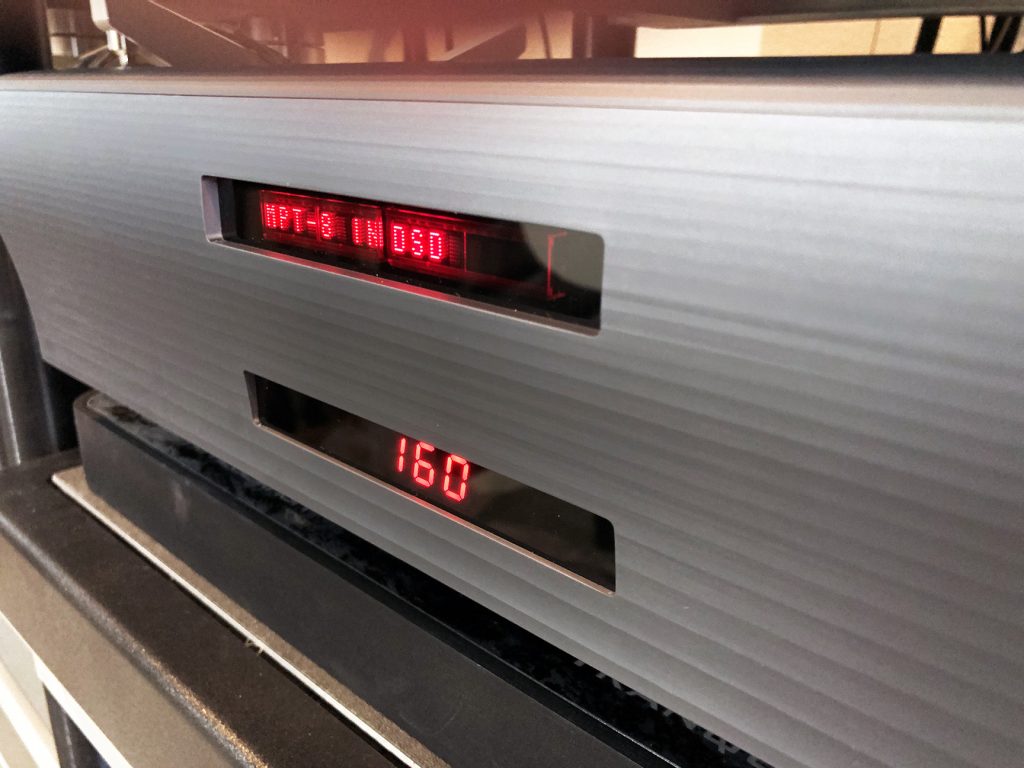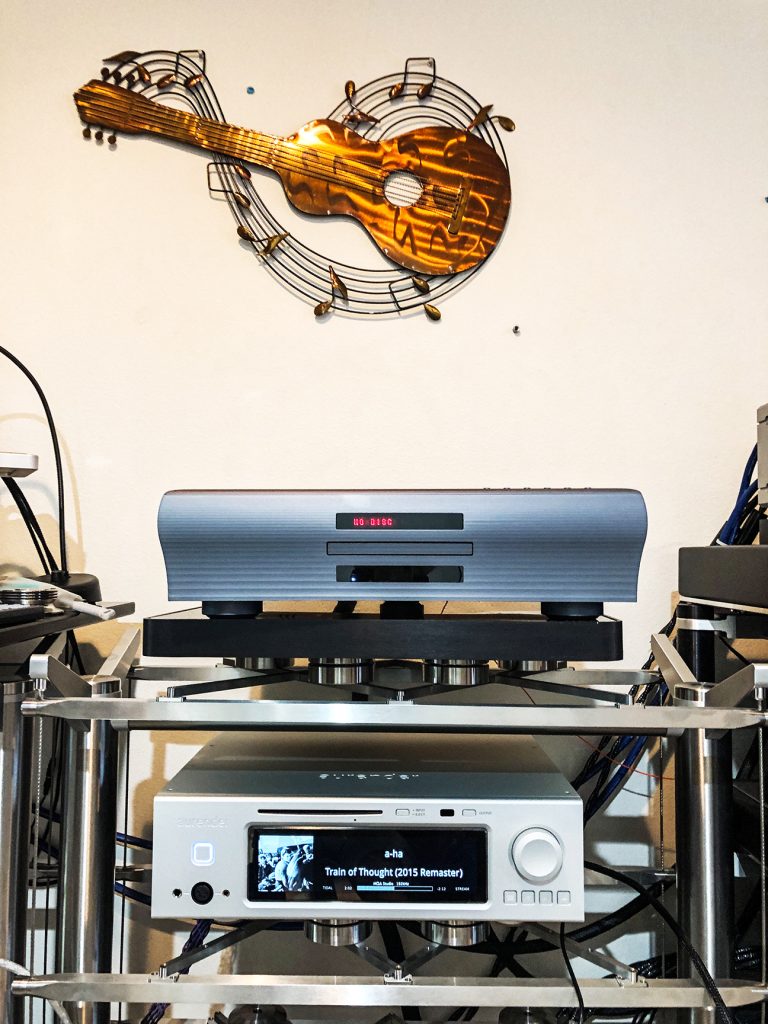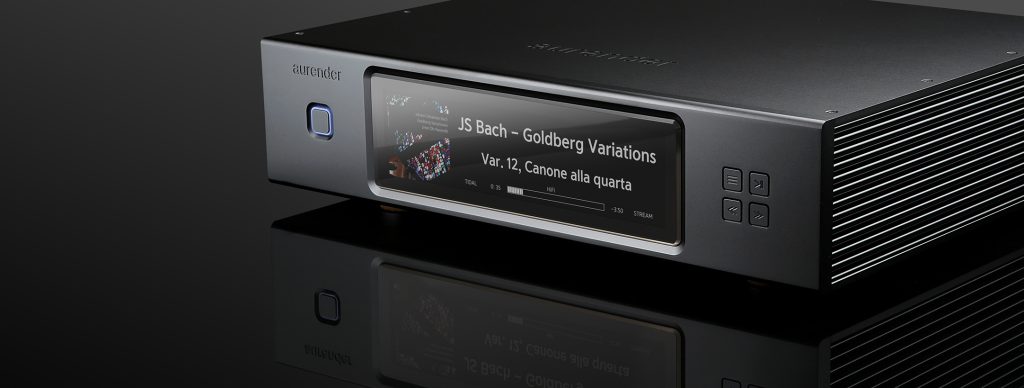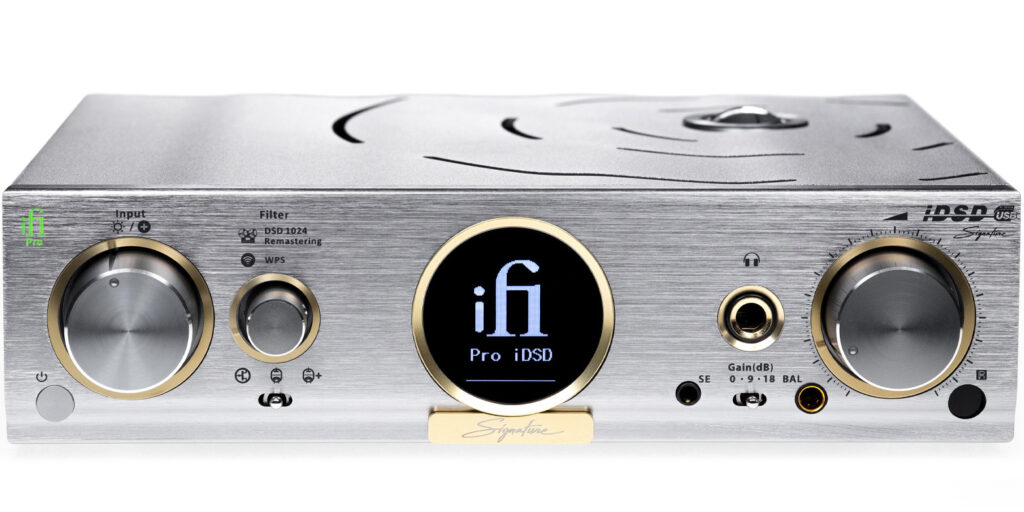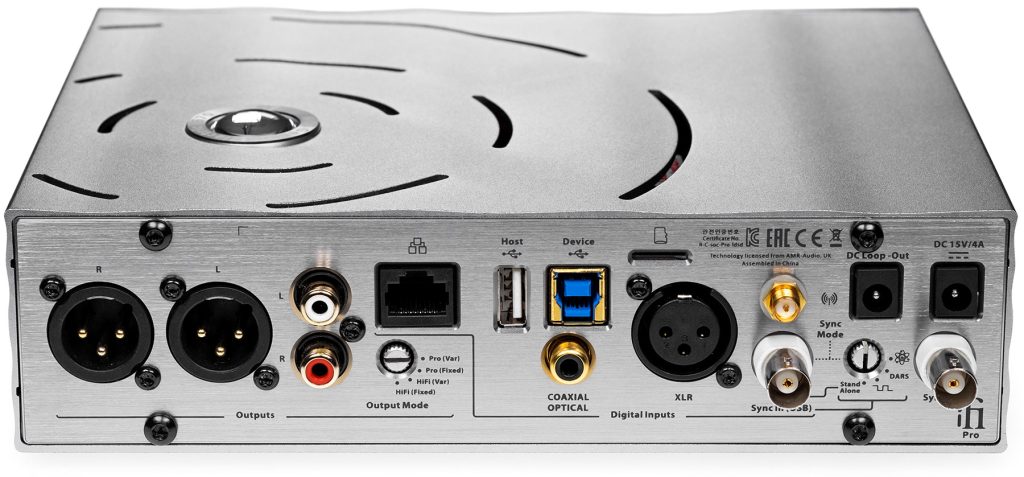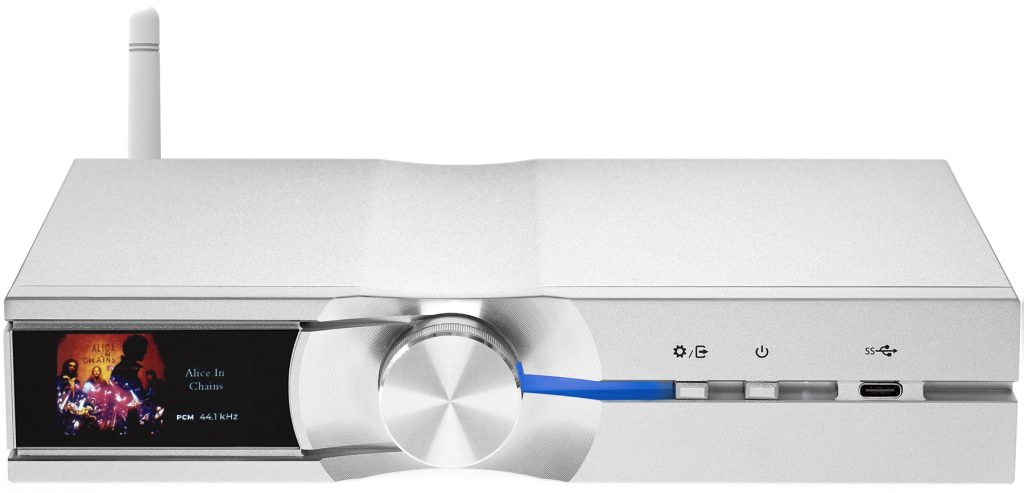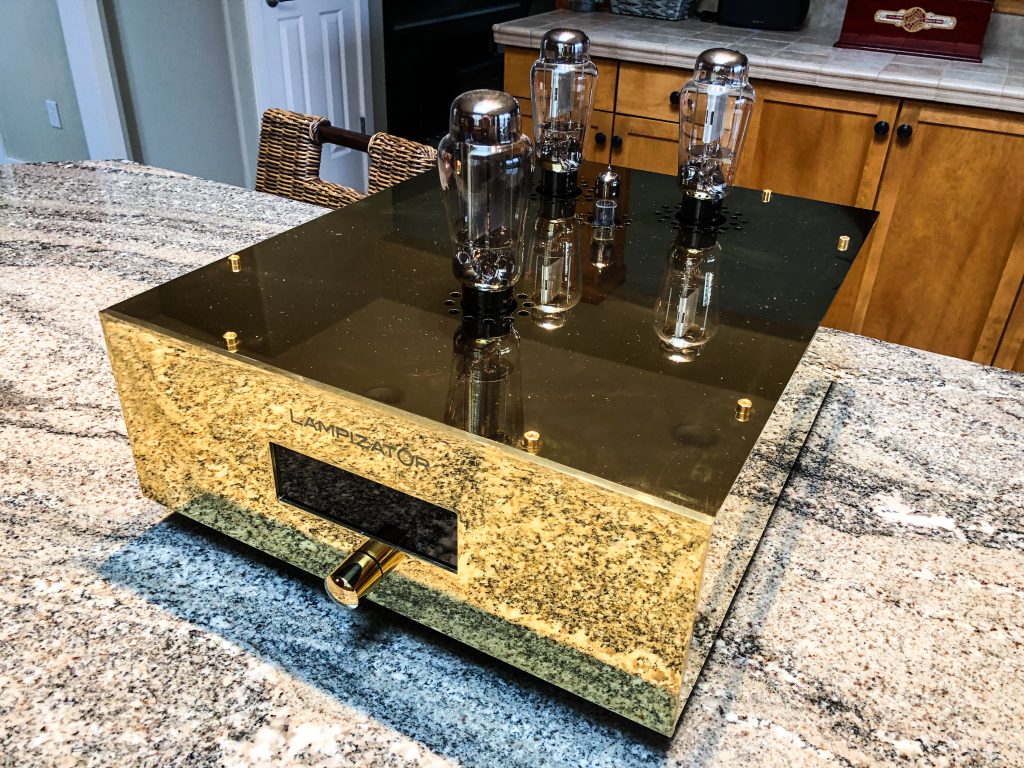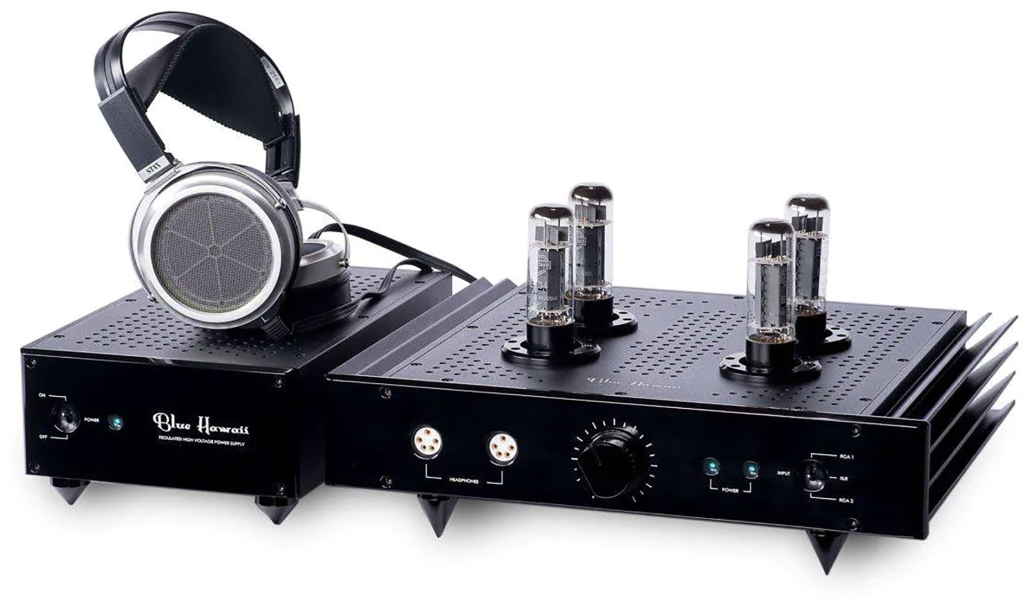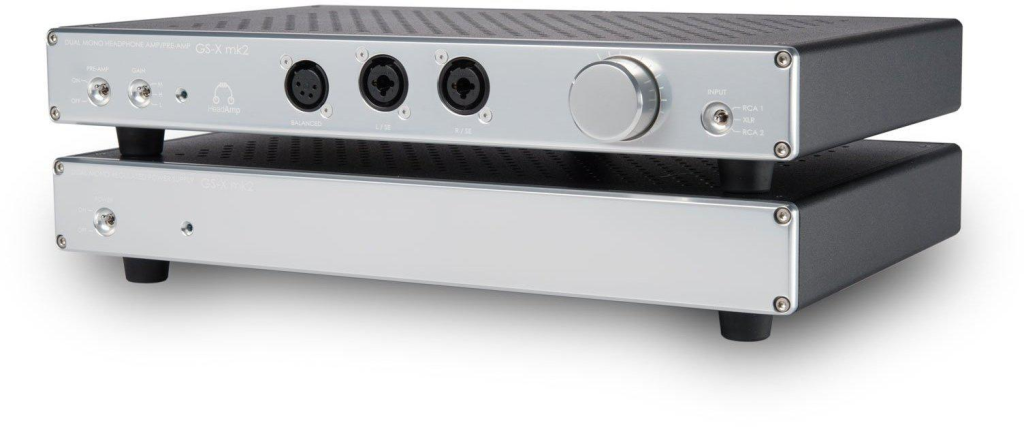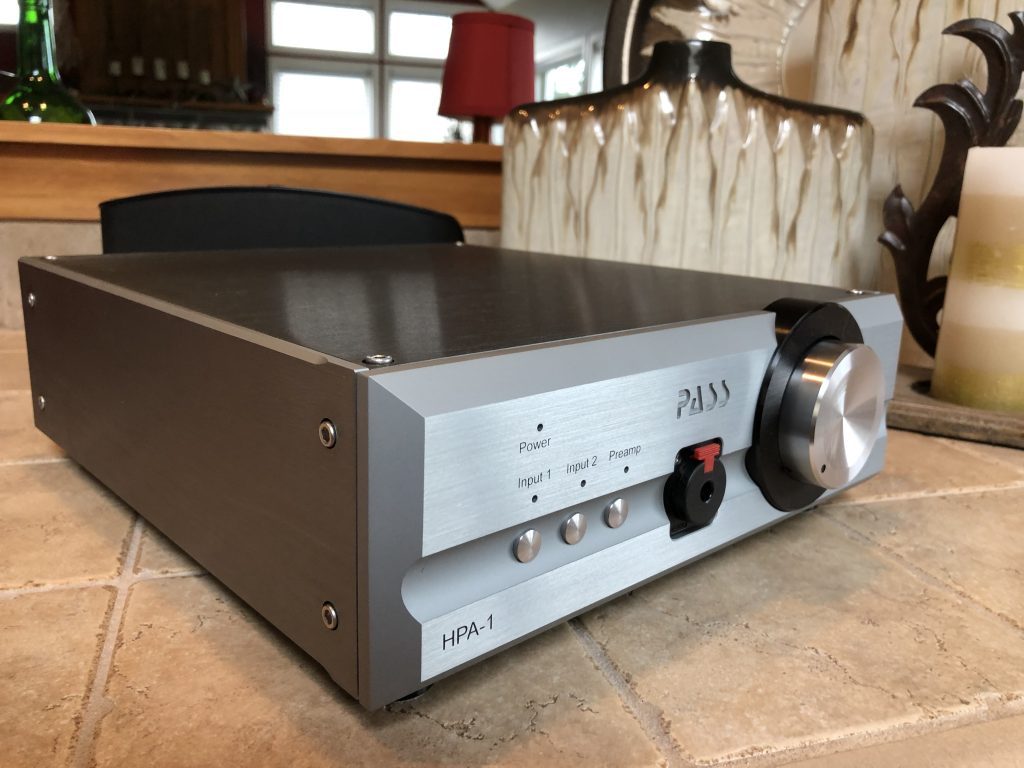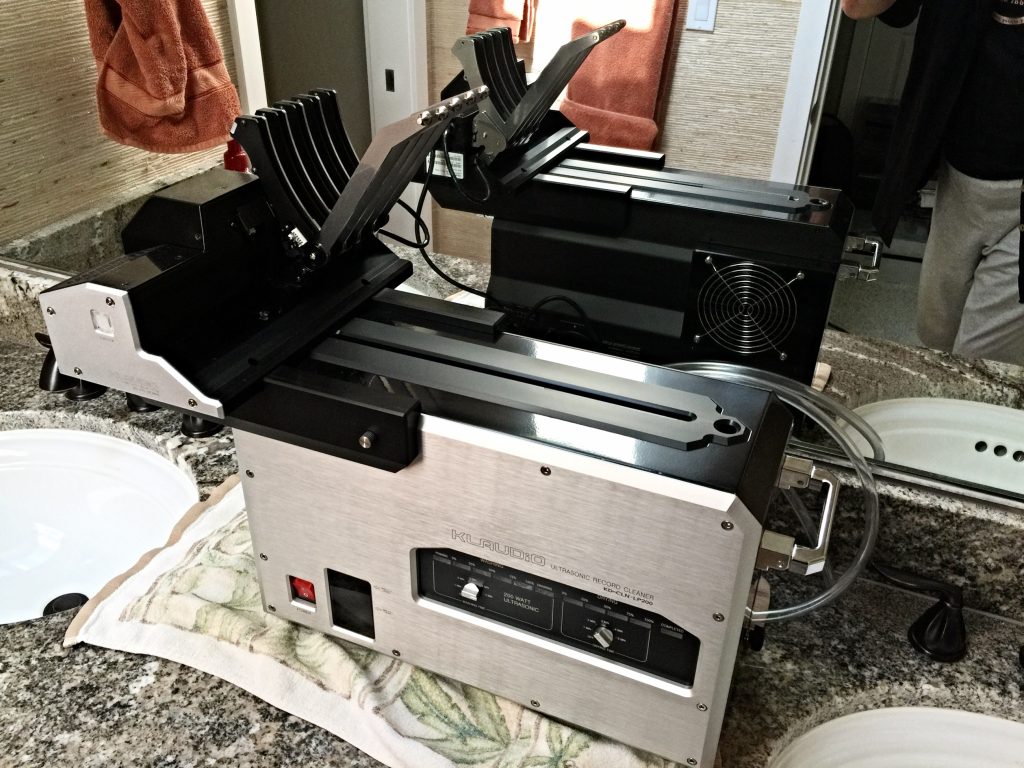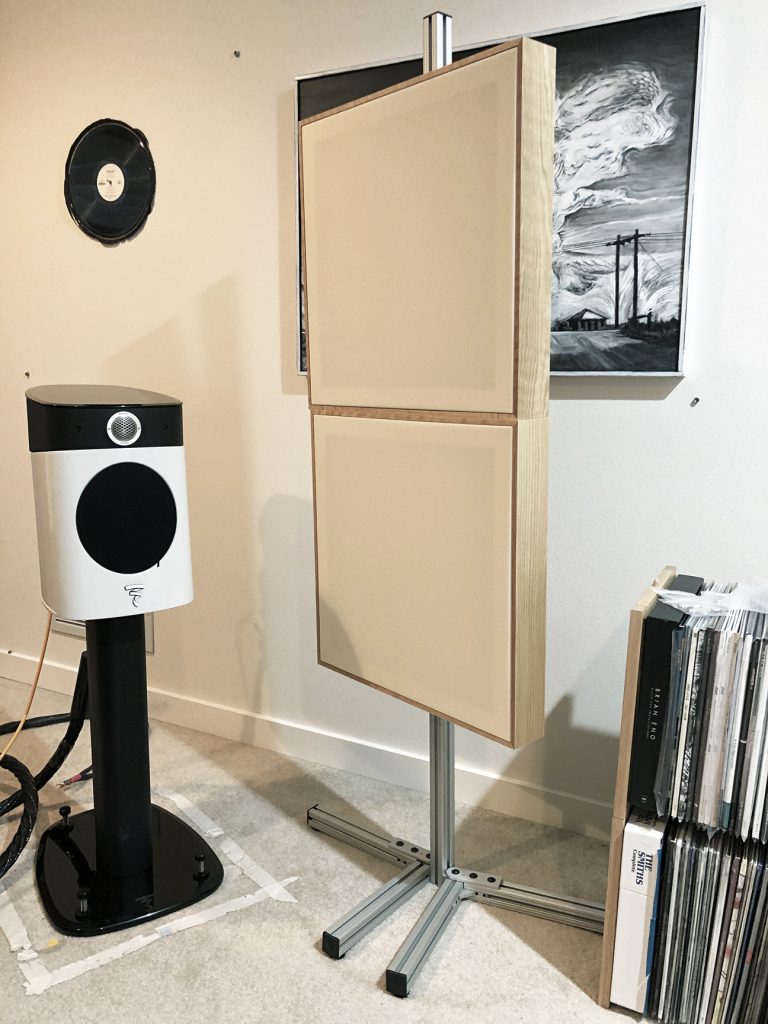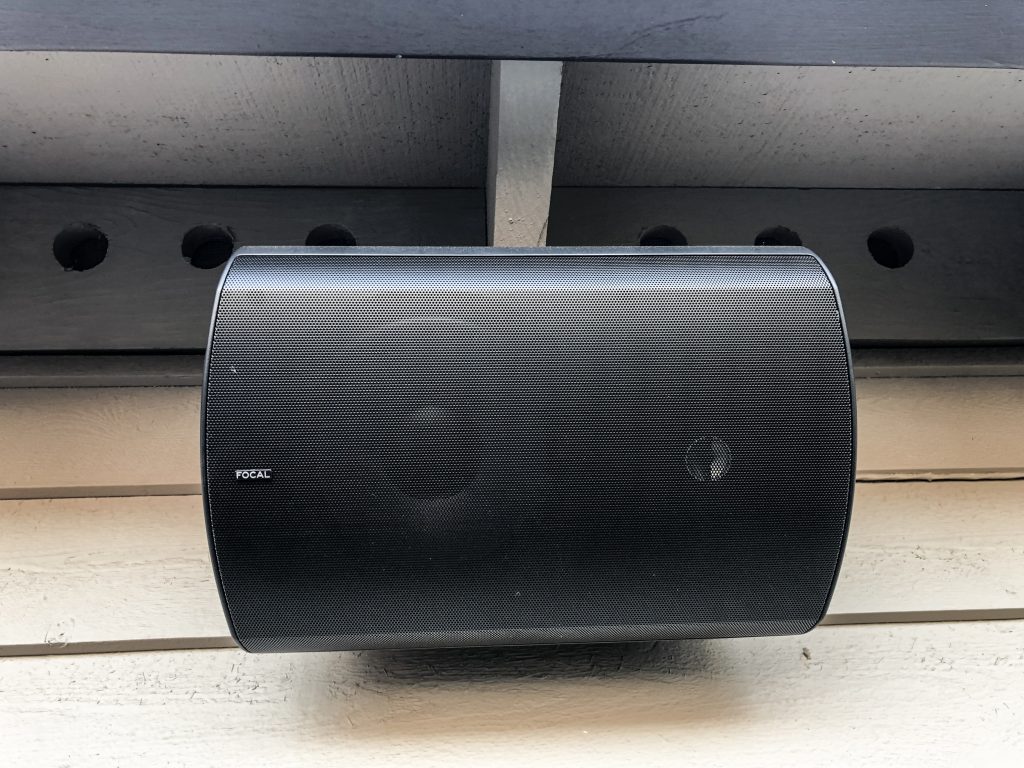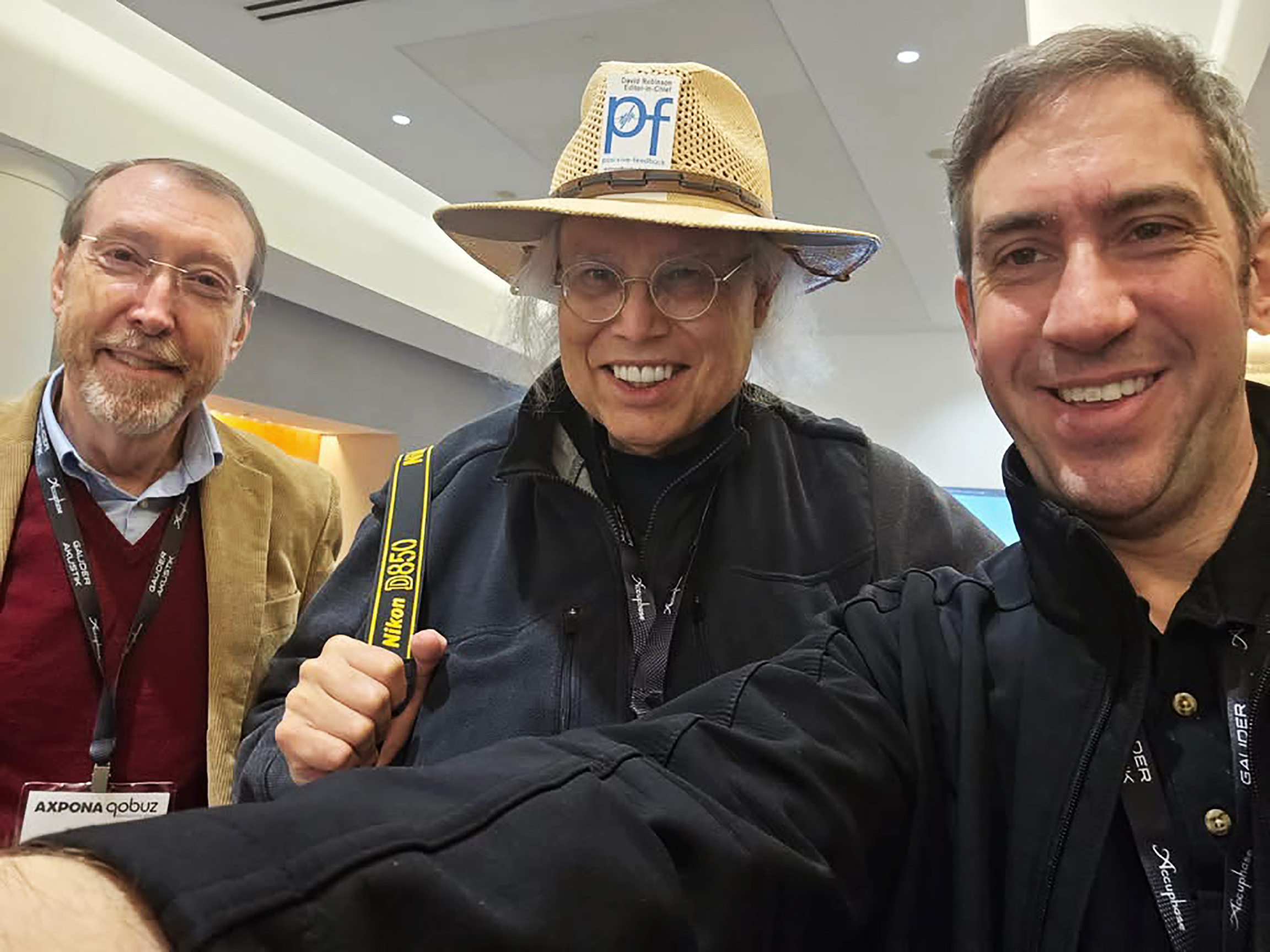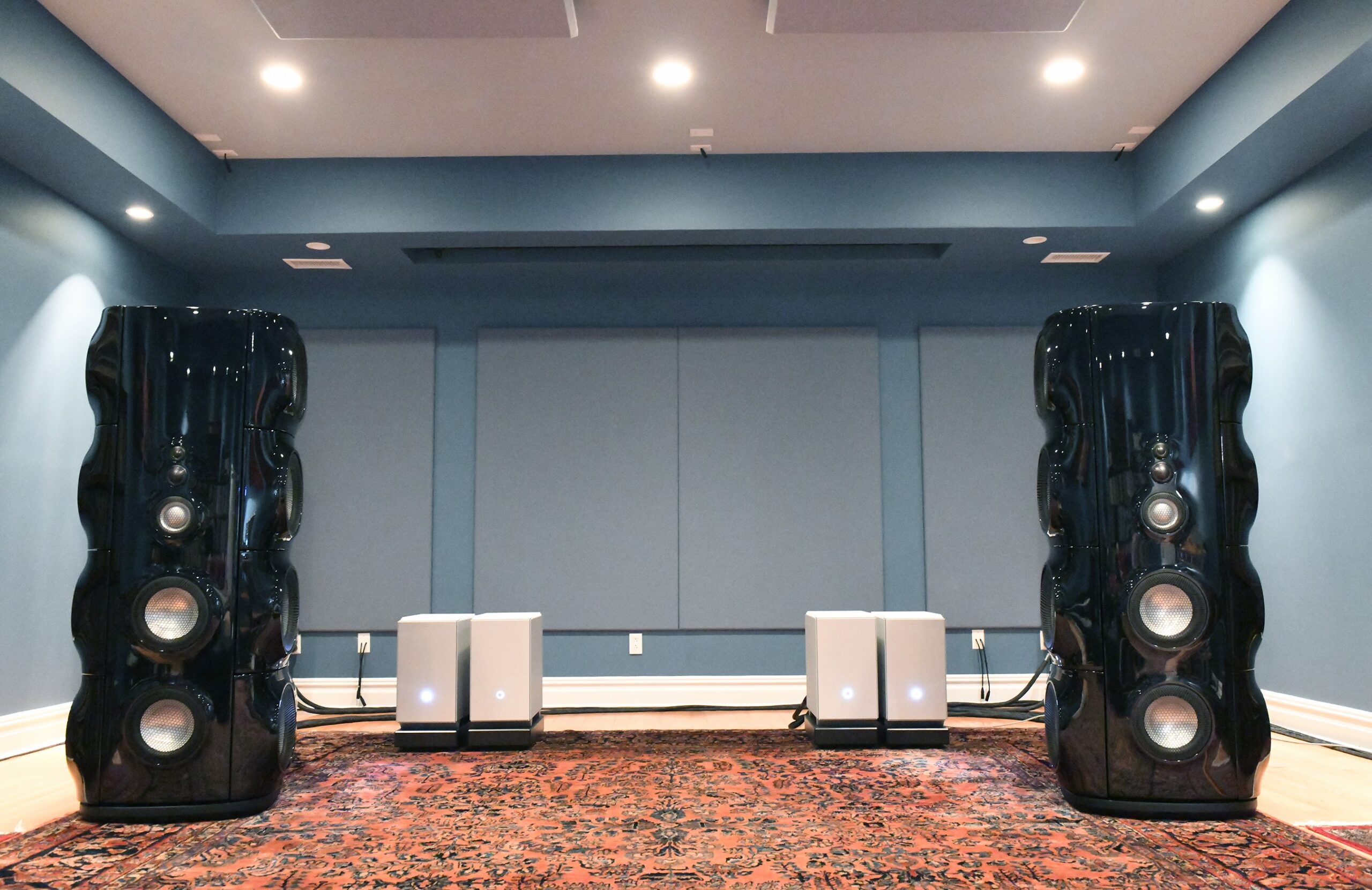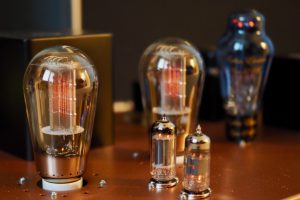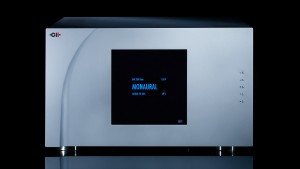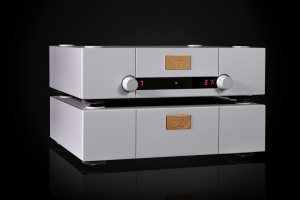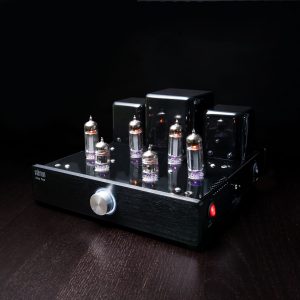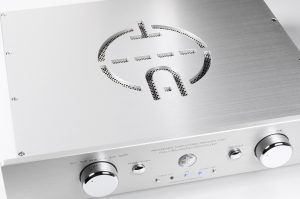
David W. Robinson: a portrait by John Robinson
The Merrill Audio Element 118. Why that name?
Simple, says Merrill Wettasinghe, the designer: "Element 118 is named after the newest element in the periodic table called Oganesson, which completes the 7th row of the periodic table. The name Element 118 reflects the newest in technologies in the Element 118 Monoblock Power Amplifiers."
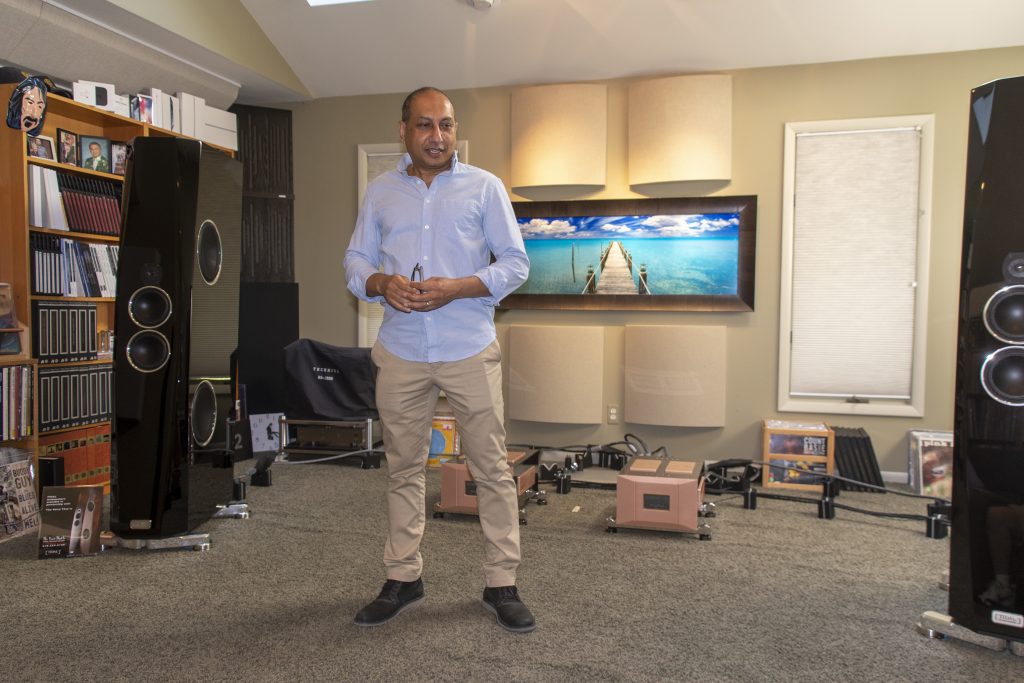
Merrill Wettasinghe with a pair of his Element 118 monoblocks, here driving some very nice Tidal Audio loudspeakers. (Image courtesy of Merrill Audio)
Well, something's sure new. Twice already in the past nine months, I have touched upon the strong impression that the Merrill Audio Element 118 monoblock amplifiers have had upon me. Nothing's changed; I'm still haunted by the unique and extraordinary listening experience that these monoblocks induced in me.
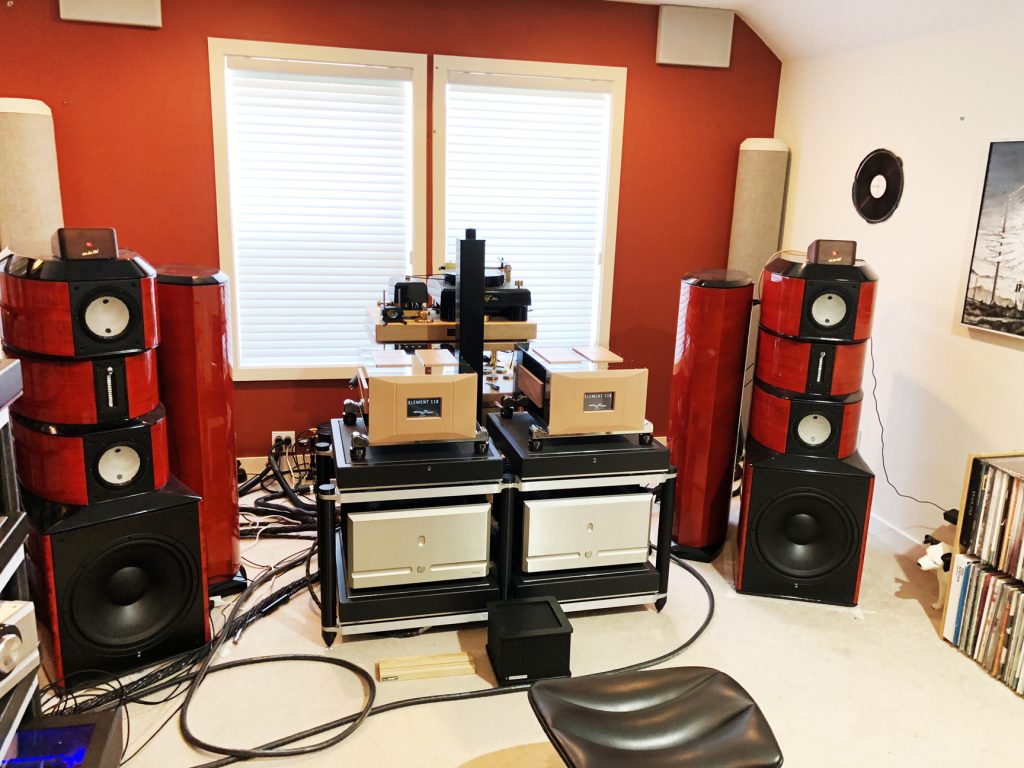
The system that haunted me (photograph and image processing by David W. Robinson)
At the end of last year, I gave them plaudits for their extraordinary transparency and quickness, jumping like crystalline lightning with the dynamic swings of various reference recordings that I used with it. This lead to the Element 118 winning one of my Brutus Awards for 2018 in our end-of-the-year Issue 100. And this was in a year with some sterling products also vying for high praise. For the Element 118s to make such an impression on me in such company was extraordinary.
Let's digress to review the Element 118 spec sheet, which I supplied back in April, as reported by the Merrill Audio site.
Specifications
- S/N: 110dB
- Gain: 26dB
- Power rating: 400watts into 8ohms, 800 watts into 4 ohms, 1600 watts into 2 ohms
- Speaker Terminals: Dual pairs of posts for bi-wiring, Dual pairs of posts for bi-wiring. WBT – 0710 CuMc. Accepts Bananas, spades or wire.
- Input: XLR Balanced input, Cardas XLR
- Power AC: 20A AC inlet, Furutech Rodhium Plated inlet
- Footers: Stainless Steel Outrigger, GAiA III from Isoacoustics
- Size: 350mm (13.7") W x 220mm (8.7") H x 495 (20.4") D without outriggers, 460mm (18.1") W x 275mm (10.8") H x 495mm (20.4") D with outriggers
- Shipping size: 610mm (24") W x 355mm (14") H x 610mm (24") D
- Weight: 30kg (65lbs)
Thus, the technical shorthand view.
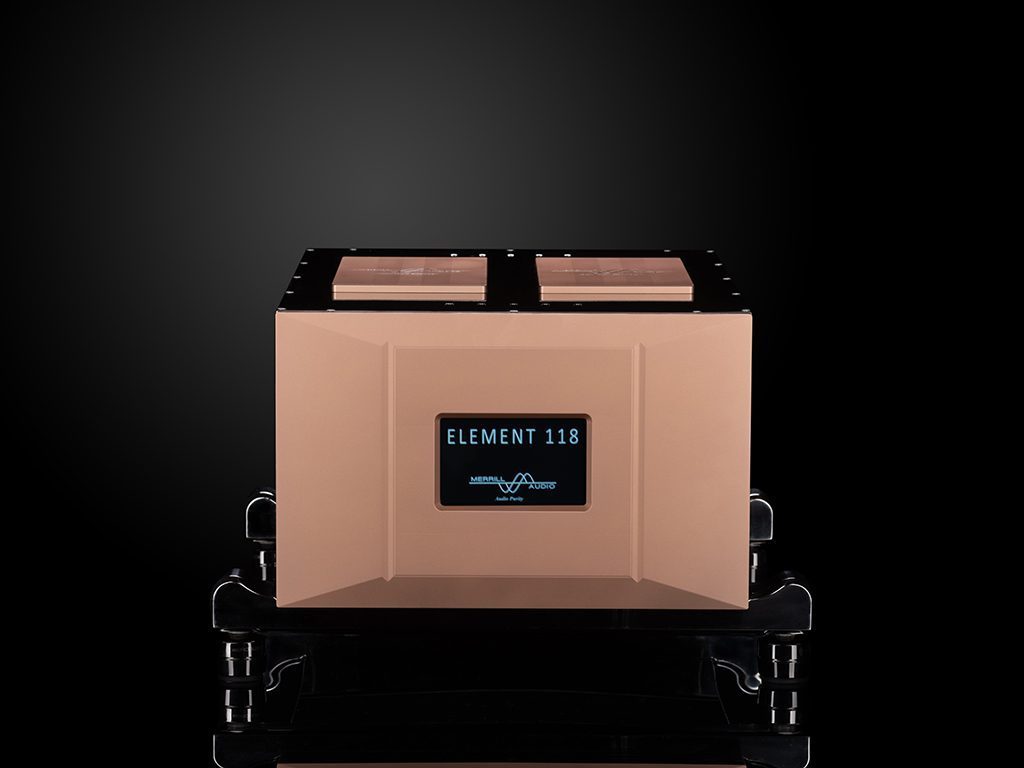
Image courtesy of Merrill Audio
Continuing, I followed up with further comments in Issue 102, detailing the specifications and giving more specifics about the Element 118. After listing the hardware details, I had this to say about the 118:
"But specs alone don't spell out the magic that can happen with superlative high-end kit…and the 118s are exactly that."
And as I spent months with the 118's, I came to the following conclusion:
"The Element 118's are spookily, nearly supernaturally transparent, clean, and clear. In fact, I'm not sure that I've ever heard better than this for these critical audio virtues in any amplifier. I've heard a few that are in this range…Audionet comes to mind, of course, and darTZeel…but the 118s are so very nearly not there in their transparency that it must join the very best of the very best in my audio pantheon.
And SPEED. Did I mention SPEED?
("Look! Mercury just ran past!")
<
The Merrill Audio Element 118's in place on a Critical Mass Rack with Synergistic Research in evidence... (photograph and image processing by David W. Robinson)
The usual price that you pay for exceptional clarity, transparency, and speed, is a tendency towards the analytical, the colder side of things, even a sort of disembodied aloofness from the richness of our recorded music. I've heard some components that leave me cold, and feeling indifferent to what I should passionately love.
That never happened with the Element 118. No, never. Not once as I listened did I ever think of those great high-end terrors that analytical gear dooms you to: visions of razor blades, iceboxes, frigid seas, and failed romance.
Smashing clarity with fantastic quickness and parsecs of transparency…and yet a sense of organic presence and rightness. Month in and month out, with LPs, DSD, and SACDs, I was struck by the effortless crystal-clearness of what I was hearing."
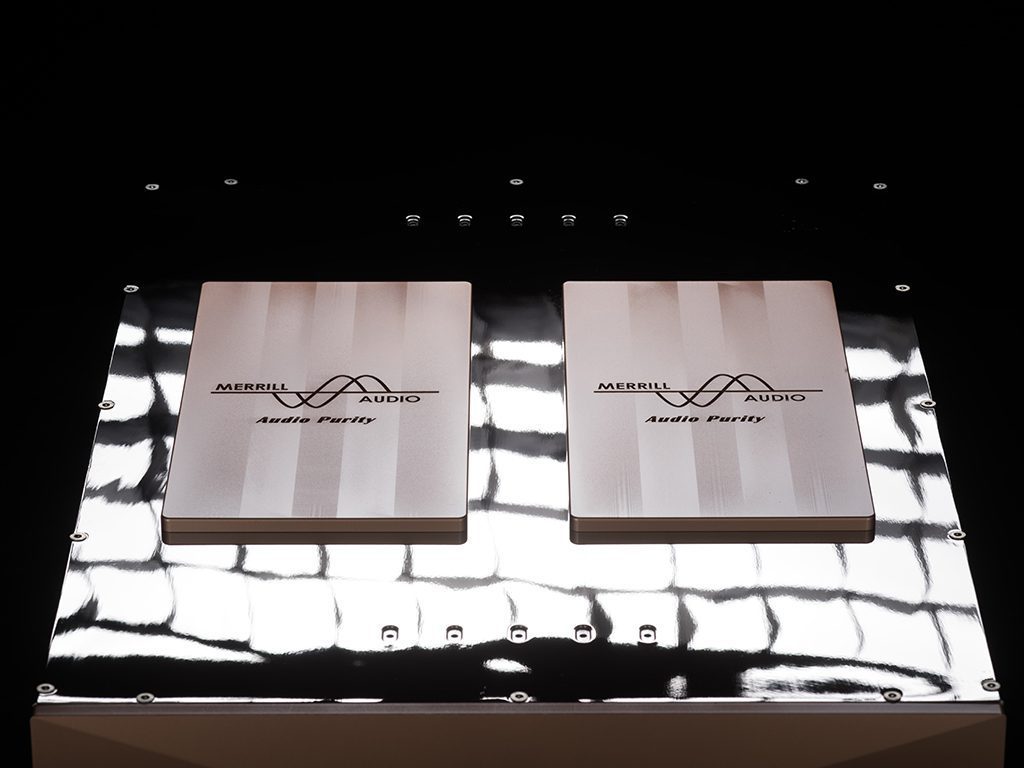
Image courtesy of Merrill Audio
In a nutshell.
I thought that this was enough…in fact, I said, "I had been thinking about doing a follow-up review, but as I've thought about it, there's no reason to go on and on about the 118s, and follow my more usual format.
No, it's not necessary."
But since then, on second thought, I'm not so sure that I shouldn't have said more. Especially since I continue to remember the 118's with such affection.
And so, I will.
About that "…transparency and quickness…"
This is a line of audio thought that I've been thinking about for many years now. Giving praise where praise is due, my good friend Lloyd Walker got that rock rolling back in the early 2000s, when I took delivery of my Walker Audio Proscenium Black Diamond System. From that time to this, Lloyd's emphasis on transparency and quickness has advanced with every new product that he's developed…and that's some 13 years or so now.

Lloyd Walker: a portrait. Happy Valley, OR, 2014. (Photograph and image processing by David W. Robinson)

A portrait of Lloyd Walker. Happy Valley, OR, 2016. (Photograph and image processing by David W. Robinson)
There are a number of descriptors commonly used in the evaluation of high-end audio equipment. Favorite terminology varies by reviewer, as does the order of priority. Dynamics (often described in terms of micro and macro), its related quality of quickness (how fast can a system slew to match the demands of the source signal?), detail (both micro and macro), various frequency ranges (bass, midrange, treble/high frequencies), dimensional terms (height, width, depth), spaciousness, imaging (the ability to localize sources in a stereo system), soundstaging (the presentation of a coherent and integrated field of sound), soundspacing (a term that I've developed to describe the ability to create an immersive sound experience, usually only found in multi-channel systems), Art Dudley's "PRAT" (pace, rhythm, and timing), harmonic integration (do all frequency ranges fuse into a sonic oneness?), and what I call organics, a term of sonic and soulish wholeness that takes the music and the audio arts to whole new levels. This is roughly equivalent to what Harry Pearson and others used to call "gestalt," defined by Merriam-Webster's dictionary as "something that is made of many parts and yet is somehow more than or different from the combination of its parts."

"Flying," a painting by Dan Zimmerman.
And yet…over time I've come to think of transparency as the king of the audio virtues. All of the above qualities are important, each in its own way, but the great revelator…the gateway and gatekeeper of all sonic virtues…is, in my estimation, the degree of clarity, the lack of resistance to the underlying reality of a truly great recording. Does a given component or system get in the way of the music, via inability to resolve the source signal, or due to sonic colorations that euthanize any prospect of realizing the possibilities of the recording?

The greater the transparency, the greater the sonic revelation that's possible, and the more likely that the emotional connection with the recording and the music it embodies will occur.
And so, I put transparency first.
Quickness…the ability to zoom from ppp to fff in a flash…makes a fine audio sidekick to transparency.
Which brings me back to the Merrill Audio Element 118. It was clear to me from the get-go, and confirmed over time, that the 118 was one of the fastest amplifiers that I had heard in my listening room…no slew of despond here…and that it was crystalline it its audio presentation. All other audio virtues poured in without a problem. I was actually a bit flummoxed and befusticated by what I was hearing.
According to Merrill Wettasinghe, the chief honcho at Merrill Audio, there are good reasons for this:
"Emotionally connect to your music with the top of the line Merrill Audio Element 118 Monoblocks that uses our proprietary ZXOL design, using most advanced transistor technology, our advanced power supply technology and a burning passion for excellence. That is the essence of the Merrill Audio Element 118 Monoblock Power Amplifier design."
"Emotionally connect…" That's a phrase that is at the heart of what I think we should be about in fine audio. Otherwise, why do we bother with it? Merrill gets this too, obviously.
My kind of guy.
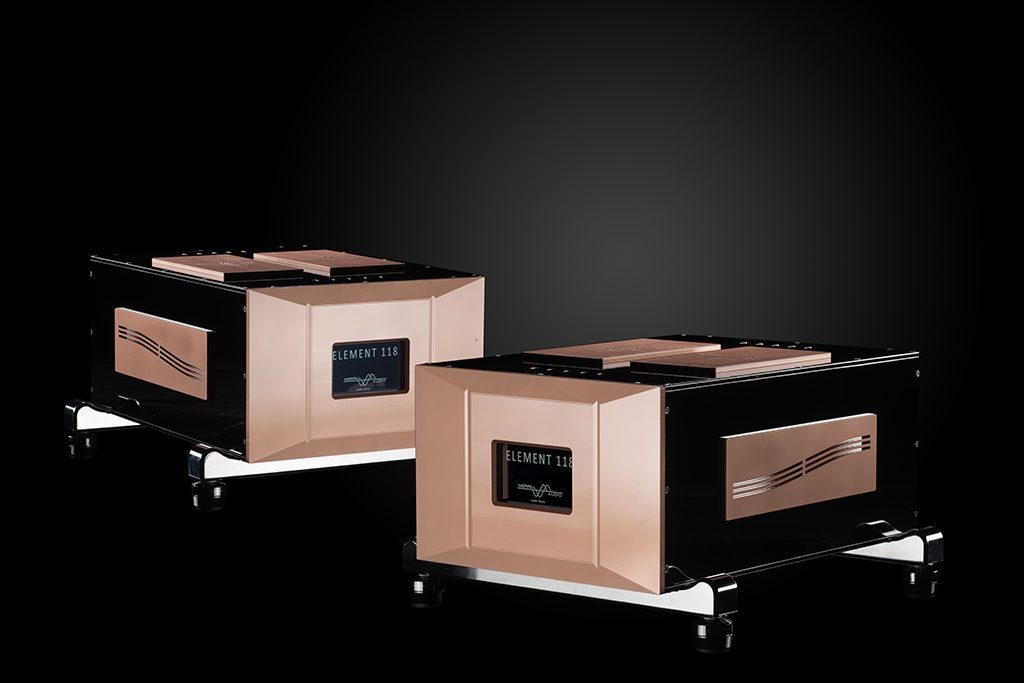
Image courtesy of Merrill Audio
"Gallium Nitride Transistors are one of the cleanest, fastest transistors available today, first commercially available in 2004 for the Radio Frequency market. With its power capability and speed, it was destined to replace the power MOSFET. The Gallium Nitride Transistors are more efficient, reliable and don't have the slow recovery characteristics of the MOSFET with its large gate capacitance. The Gallium Nitride Transistors can operate in the Gigahertz range. Gallium Nitride Transistors offer a fast, clean, low distortion power capability, and yet is natural and smooth in its musical capability.
Merrill Audio's proprietary design in the Element 118 Monoblocks uses a zero-crossing open loop design (ZXOL) capitalizing on the Gallium Nitride Transistors speed and low gate capacitance. The open loop design in the Element 118 Monoblock design gives music reproduction that sense of ease in reproduction by removing delays in the feedback loop. There simply is no feedback loop. The fast and clean switching at almost zero-time lag means a clean, crystal clear, detailed signal reproduction, without the heavy weight of feedback to correct any distortions of the output stage, or the heavy feedback used in many of the Class D designs to cover come the dead time distortions. Gallium Nitride Transistors have very little capacitance, hence don't have the traditional overshoot and ring commonly seen on MOSFETS, which have a much larger capacitance. The Merrill Audio Element 118 Monoblock power amplifiers have a special 6-layer Printed Circuit Board which reduces, to near zero, all parasitic capacitance and inductance. This further improves any overshoot, ring or harmonic distortions. Music is brought to you in a very emotional and natural way.
The combination of the specially designed PCB, and the Gallium Nitride Transistors allow for a design that has zero dead time, simply not done in any other designs. The means a perfect translation of the audio signal, which is confirmed with the zero feedback. With zero dead time, zero feedback, this is not your old putzy Class D amplifier."
No kidding.
It's obvious that Merrill and company sought to find the cutting edge in the 118. Gallium Nitride (GN) devices are the latest generation in solid-state technology, and show real promise for the future of high-resolution audio, both analog and digital. I also like the fact that the bandwidth addressed by GN is enormous. (Gigahertz is a wonderful thing when it comes to ultimate audio arm span.) Lightning-quick response from horizon to horizon.
It makes me wonder if it even makes sense to talk about slew rates with a design like this.

Nor was the power supply and other supporting case neglected in the design process.
"For the ultimate in musical immediacy, a proprietary multi-stage power supply using an LLC Resonant power supply with custom built transformers are implemented. The amplifier now has a bottomless, instantaneous power supply and the ability to keep sustained peaks for longer periods of time. You can feel this power in the lower, deeper bass, that is beautifully clean and tight and in the immediacy of the strings, horns and percussion, with clean, clear body."

Ditto the chassis, wiring, and assembly of the 118.
Merrill says this about that:
"The burning Passion for excellence in Music Reproduction has always been Merrill Audio's mission. With the Element 118 Monoblock power amplifiers, every detail has been carefully examined and improved upon, from the chassis by using softer vibration absorbent materials to the thick copper plates for the amplifier and power supply PCB mounting plates. The more expensive electro-plating is used instead of anodizing, to have a more natural sound. All wire is heavy gauge silver plated OFC, in PTFE sleeving, and is hand-soldered for the best connections. PTFE sleeving is used as it has the best available dielectric of 2.1, next to air. Every component utilized is hand selected, with the tightest tolerance for the finest performance."
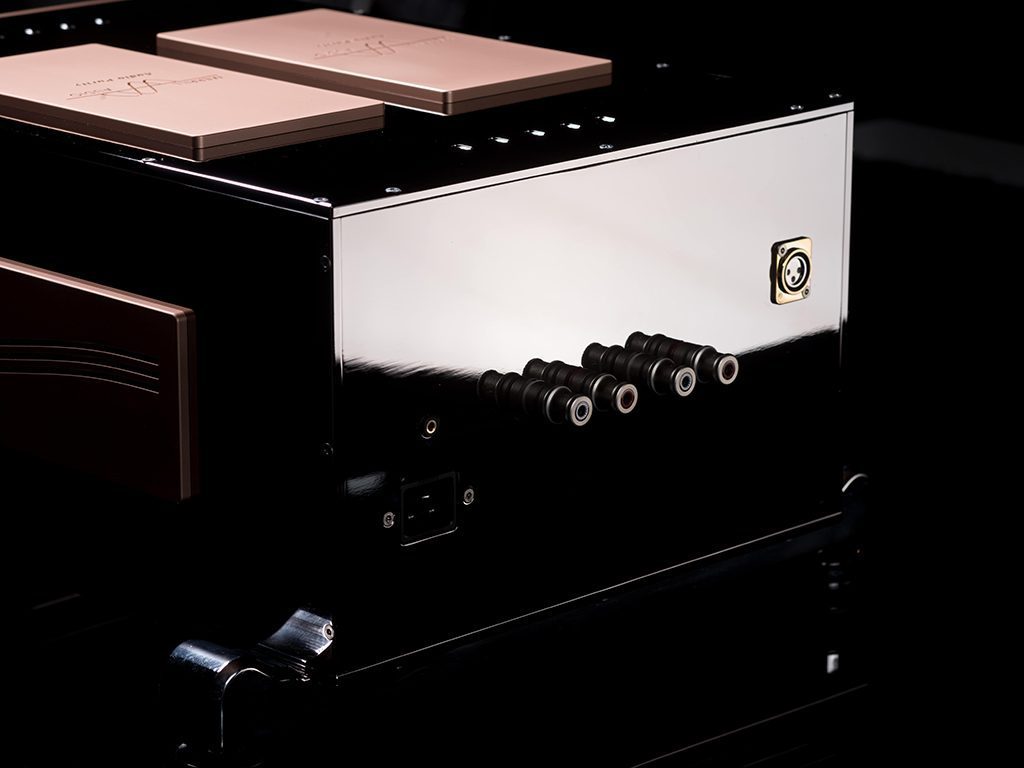
Talk about musical gestalt…audio sobornost…and synergy in spades. That's the 118.
Merrill's tech notes make the claims, and I can definitely confirm these qualities, since I used SACDs, Single, Double, and Quad DSD source files, plus megatons of LPs to evaluate the performance of the 118s using as many genres and artists as possible to verify early impressions. I particularly concentrated on challenging albums as I realized the significant performance that I was hearing.
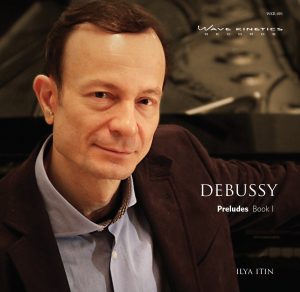
Among these were Ilya Itin's Debussy Preludes Book 1, a stunning performance recorded directly to Quad DSD by the brilliant 5/4 Productions team, and released on Wave Kinetics Records…
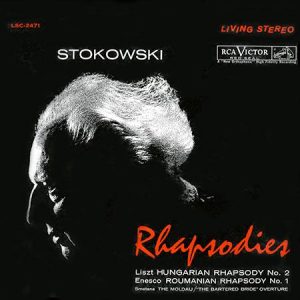
…my dear friend Stowkowski, Rhapsodies, on Analogue Productions 200 gram LP, an exceptionally important reference recording for system evaluation…
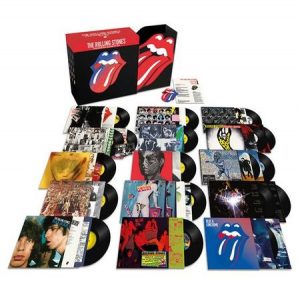
…my Rolling Stones LP box set, a kick-ass box set if there ever was one…

…The Smiths LP box set…lovely, lovely…

…The Lord of the Rings complete music, Volume 1, Howard Shore, a wonderful, haunting work, with hours of deeply moving compositions…
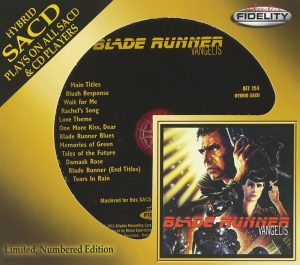
…my Vangelis Blade Runner soundtrack on (the late and highly-lamented) Audio Fidelity SACD…
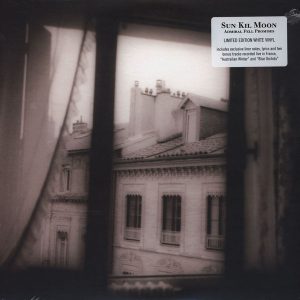
…Sun Kil Moon's brilliant Admiral Fell Promises on limited edition colored vinyl LP…and on and on and on. Elliot Smith on LP...

...the Foo Fighters on plain-old CDs; Fritz Reiner and the CSO doing all sorts of their usual brilliant orchestral stuff on Analogue Productions LP; John Coltrane and Miles Davis on both LP and Japanese SACD...

The Beatles reissues on LP; a ton of Vinyl Me Please, Turntable Lab, and Merchbar special limited edition reissue LPs…you get the picture.
The Element 118's got a massive workout while here…months of demanding music. All sorts of genres, and every format except RTR (the ATR Service Ampex ATR-102 is out for maintenance and upgrades, and is being used for transfers of tape to DSD).
Not a single disappointment or anomaly in all that time.
None.
Where did all of this lead me?

Good question.
Blunt answer: Regardless of the source recording, the 118's produced a superlative, absolutely top-o'-the-heap result in our listening room here, in every audio dimension.
I've already commented on the incredible transparency and quickness of the 118s…no reason to restate that. Truly world class.
The dynamics were amazing, at both the micro- and macro- levels. The suddenness of musical swings could be quite breathtaking, quite literally startling me. Even with Itin's Debussy Preludes Book 1 in Quad DSD, there were passages that suddenly thundered out, the Steinway firing a volley of deep notes that were positively gob smacking. The Blade Runner soundtrack on SACD was full of jump…crisp, clean, and clear. The "End Credits" track alone was worth the price of admission. Credit the Evolution Acoustics loudspeakers and Pass Labs XS Phono and XS Preamp for being able to swing with the 118's, driving and following the monoblocks.
The deep silence of the 118's when silence was called for allow for the nuanced emergence of the music at any level of dynamics, all the way out to terrifying. This is where the incredible quickness of the GN devices strutted their stuff particularly…aural lightning in two chassis. PRAT for sure, in spades.
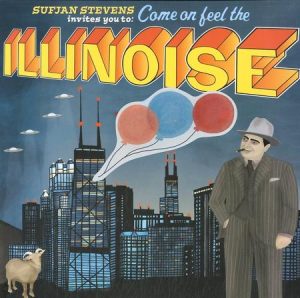
But harmonics and tonal integrity were never left behind. Some seem to think that such a quick and transparent amplifier must be analytical, especially when it is not pure Class A. Not so, amigo. The 118s heal any breach With the VPI Titan in place, reference LPs shone with sonic coolosity and rightness, making the Evolution Acoustics MM2/Exact external crossovers sit up and take notice. Whether dealing with the lovely and haunting work of Sufjan Stevens…

…or Ryan Adams at Carnegie Hall, with its spacious presentation of Adams' melancholy lyrical performances, the 118's never faltered.
Nina Simone's "Nina Simone Sings the Blues" is a powerful, rich, and intense set of recordings. I invested in the Vinyl Me Please reissue on lovely blue vinyl, and was very pleased by the result. (If you don't yet belong to Vinyl Me Please, check it out HERE. You owe it to yourself…and thanks again to Nelson Pass for introducing me to VMP.) Every Simone performance or recording was also a punch to White racist culture, a scream in the face of the hatred and murderousness of American apartheid. Certainly the 118's brought out every nuance of Simone's brilliance…and rage. It was like flaming crystal to hear Nina with the Pass Xs/Element 118 combination.
All of these are just cases within months of listening. I could keep writing, but I think you get the picture.
The outcome for me?
A major emotional connection to the music with the Element 118's, regardless of genre, format, or mood.
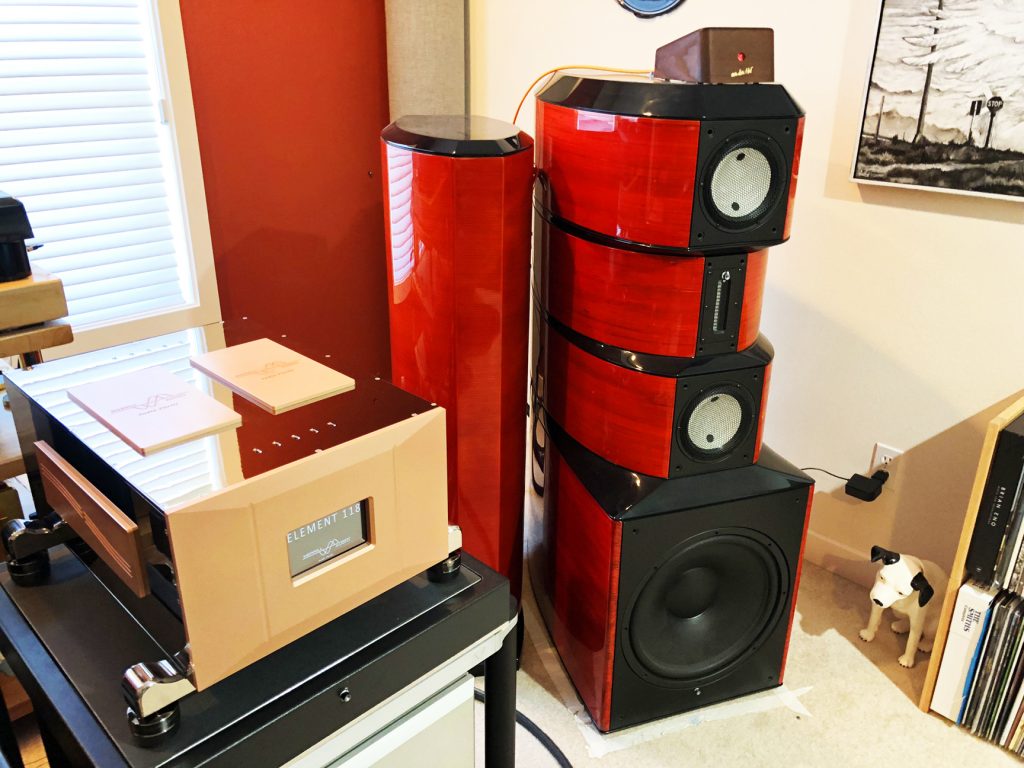
The Element 118 with the Evolution Acoustics MM2/Exact external crossover (photograph and image processing by David W. Robinson)
This was at the highest level, too, with associated equipment of the finest kind. Pass Labs Xs. Evolution Acoustics. Playback Designs. Kubala-Sosna. Synergistic Research. van den Hul. Critical Mass Systems. Stillpoints. JENA Labs.
This means that Merrill Audio has gained entry to the highest realm of my Panaudion of the greatest in fine audio. The Merrill Audio and its Element 118 monoblock amplifiers join the likes of Audionet, darTZeel, and the Pass Labs Xs series, atop Mt. Robinson.
Its price does put the Element 118's in tough competitive company; $36,000 per pair is definitely in the serious zone, though you can certainly spend a great deal more on stereo amplification than this. But my time spent with the 118's confirms that it is a peer…with its own unique strengths…with the best that I've heard here. Merrill Wettasinghe is definitely onto something really important here.

This is my third laudatory mention of the Element 118 monoblocks in the past nine months. A Brutus Award, a follow-up in my "Editor's Notebook" in April, and now this final wrap-up.
Three. That's rare.
Time to pay attention….
The Merrill Audio Element 118 Monoblock Amplifiers therefore receive a "Ye Olde Editor's 'Very Highest Recommendation,'" with the greatest enthusiasm.
Retail: USD $36,000 per pair
Merrill Audio Advanced Technology Labs, LLC
80 Morristown Road,
Unit 3B, # 275
Bernardsville, NJ 07924
415.5MA-HiFi (562.4434)
All product photographs courtesy of Merrill Audio; covers from their respective media companies, except as noted. Drawings by Dan Zimmerman. Alice in Wonderland drawings by Sir John Tenniel, in the public domain.






